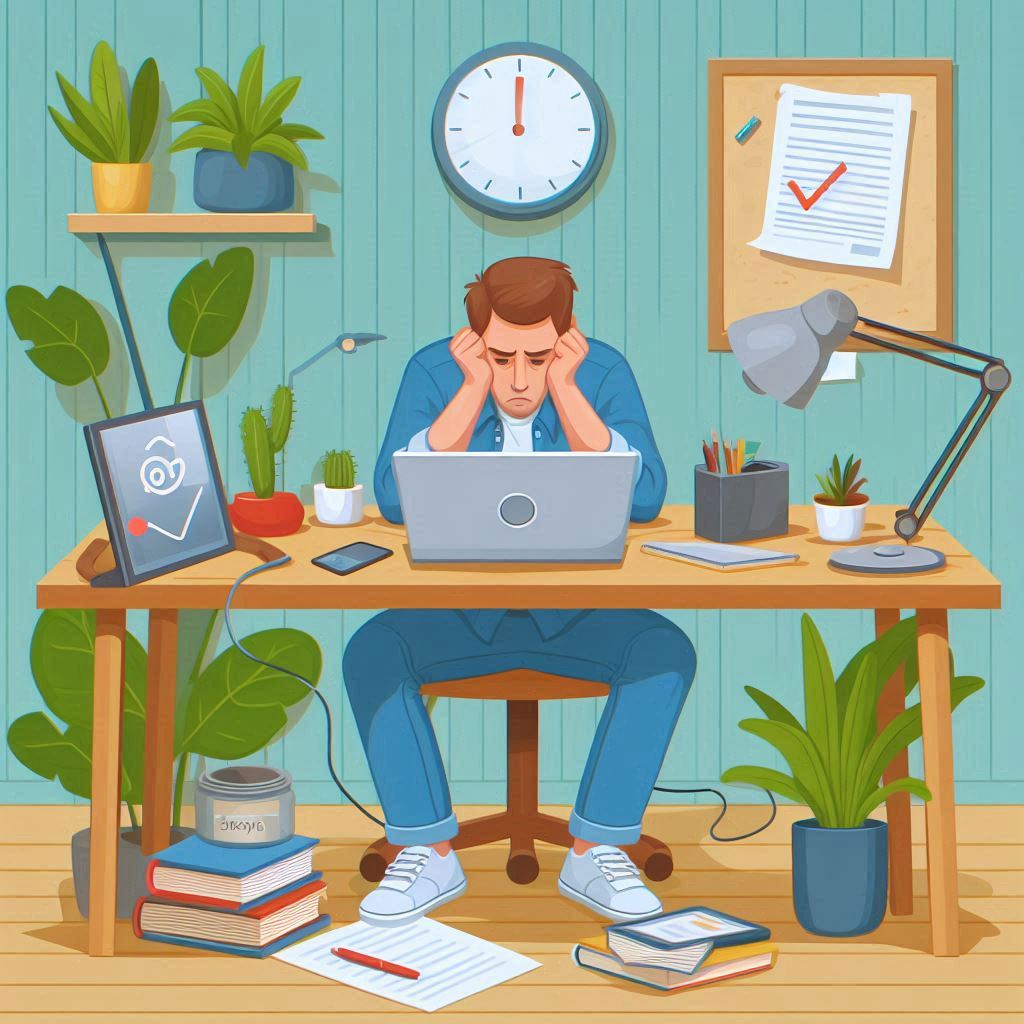In the age of digital nomadism and remote work, the flexibility to work from anywhere has brought with it a unique set of challenges.
Among the most pervasive is the risk of burnout, a state of chronic stress that leads to physical and emotional exhaustion, cynicism, and a sense of reduced professional efficacy.
Remote workers, with their lack of traditional office boundaries, are particularly susceptible to this modern malaise. Here’s how to navigate the remote work landscape without succumbing to burnout.
Understanding Burnout
Before diving into prevention strategies, it’s crucial to understand what burnout looks like in a remote context:
- Blurring Lines: Without the physical separation of work and home, remote workers often find their work bleeding into personal time.
- Isolation: The lack of social interaction can lead to feelings of loneliness or disconnection from the team.
- Overworking: The constant availability of work can lead to longer hours and an inability to switch off.
- Lack of Recognition: Not being physically present might mean missing out on the informal feedback and recognition that comes from office interactions.
Strategies for Prevention

1. Set Clear Boundaries
The first step in avoiding burnout is establishing clear boundaries between work and personal life:
- Designate a Workspace: Even if it’s a corner of your room, having a dedicated spot for work can help mentally separate ‘work mode’ from ‘home mode.’
- Set Work Hours: Stick to a schedule as if you were commuting to an office. Communicate these hours to your colleagues and family.
- Tech Boundaries: Use tools like ‘Do Not Disturb’ modes or separate work devices to prevent work notifications from spilling into your personal time.
2. Manage Your Time Wisely
Time management becomes even more critical when your work environment is your living space:
- Prioritize Tasks: Use methods like the Eisenhower Box to categorize tasks by urgency and importance.
- Time Blocking: Dedicate specific blocks of time for different activities, including breaks, to maintain a rhythm throughout the day.
- Pomodoro Technique: Work in short, focused bursts (usually 25 minutes) followed by a break to maintain productivity without exhaustion.
3. Foster Social Connections
Remote work can be isolating, but it doesn’t have to be:
- Virtual Coffee Breaks: Schedule non-work-related virtual meetings to catch up with colleagues.
- Community Involvement: Join or form remote worker groups or co-working spaces online where you can share experiences and support each other.
- Regular Check-ins: Encourage or participate in structured team meetings that include casual conversation elements to build rapport.
4. Physical and Mental Health
Your health is fundamental to preventing burnout:
- Ergonomics: Invest in a good setup to avoid physical strain. Consider standing desks or ergonomic chairs.
- Move: Incorporate movement into your day. Whether it’s a walk, yoga, or simply stretching, physical activity can reduce stress.
- Mental Health: Regularly engage in activities that reduce stress, like meditation, reading, or hobbies. Professional mental health support can also be invaluable.
5. Leverage Technology Wisely
Technology should be a tool for efficiency, not a source of stress:
- Automation: Use software to automate repetitive tasks, freeing up time for more creative or restful activities.
- Communication Tools: Choose tools that streamline communication rather than complicate it. Slack, for instance, can be configured to minimize distractions.
- Digital Detox: Regularly schedule time away from screens to give your eyes and mind a break.
6. Continuous Learning and Growth
Stagnation can lead to burnout:
- Professional Development: Engage in learning new skills or deepening existing ones. This can rekindle your passion for work.
- Career Conversations: Have regular discussions with your manager about your career path, ensuring you feel your work has purpose and direction.
7. Acknowledge and Celebrate Success
Recognition is vital for morale:
- Self-Recognition: Keep a log of your achievements, even small ones, to remind yourself of your value and progress.
- Team Celebrations: Virtual celebrations for team milestones can boost morale and build team cohesion.
When Burnout Strikes

Despite all precautions, burnout can still occur. If you start noticing signs like persistent fatigue, apathy towards work, or a decline in performance:
- Seek Help: Talk to someone, whether it’s a friend, mentor, or professional therapist.
- Time Off: Use your vacation days, or if needed, take a leave of absence to recalibrate.
- Reevaluate: Reflect on what aspects of your work are causing stress and how your work environment can be adjusted.
Conclusion
Remote work has the potential to be incredibly liberating, but it also carries the risk of burnout if not managed wisely. By setting boundaries, managing time effectively, maintaining social connections, prioritizing health, using technology as a tool rather than a tyrant, focusing on growth, and celebrating successes, remote workers can thrive. Remember, preventing burnout is not just about working less; it’s about working smarter and ensuring that your life outside of work is fulfilling and rejuvenating. In doing so, you preserve not just your productivity but your passion for your work and your well-being.
My #1 Recommendation…
For those interested in learning how to actually work from home is to learn how to build your own online business from scratch!
Check out my review for my favorite training program here.

Thank you for your reading!
* This post contains my affiliate link. If you join through my link, I may earn a commission at no extra cost to you, and you support our site! Not to mention I will be there to help you in any way I can along our journey. 🙂 *


The last job I had actually monitored my mouse movements thats How bats**t crazy they were.. can’t do it again either not remote for me or something like that program u mention. Good advice tho
Yeah, that is actually psychotic behavior..! Glad you got out of a place like that. I’m sure you won’t be the last.
Thanks for the helpful advice. I especially like the idea of setting a timer for certain tasks as I’m a chronic overthinker and while spend an hour on something that should’ve taken 20 mins. I’ve already experienced terrible burnout before and want to make sure that never happens again!
Yes, I highly recommend reading / watching more videos on the Pomodoro Technique!